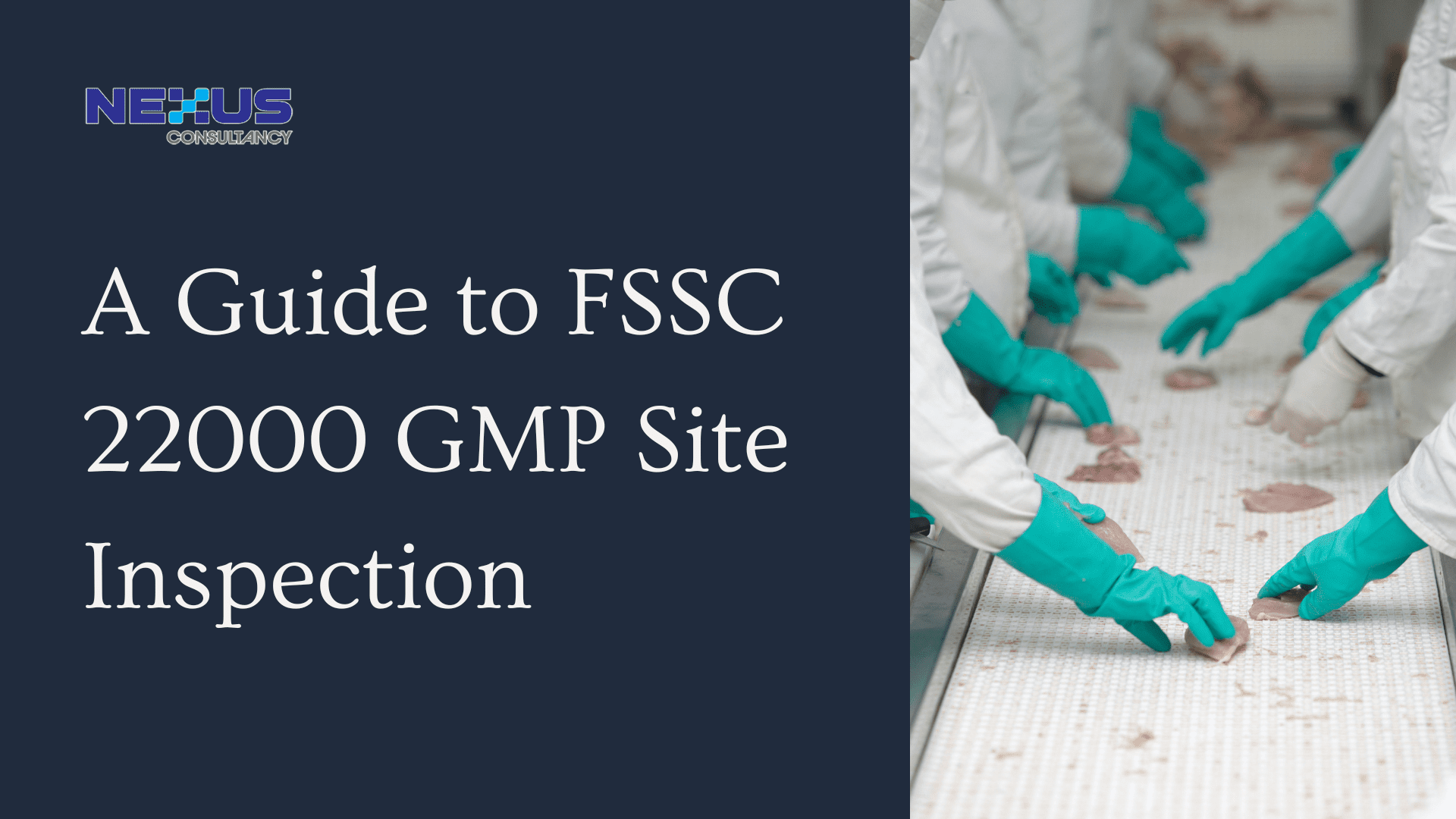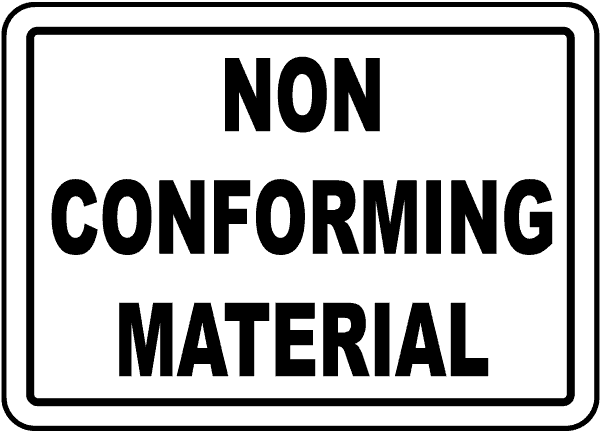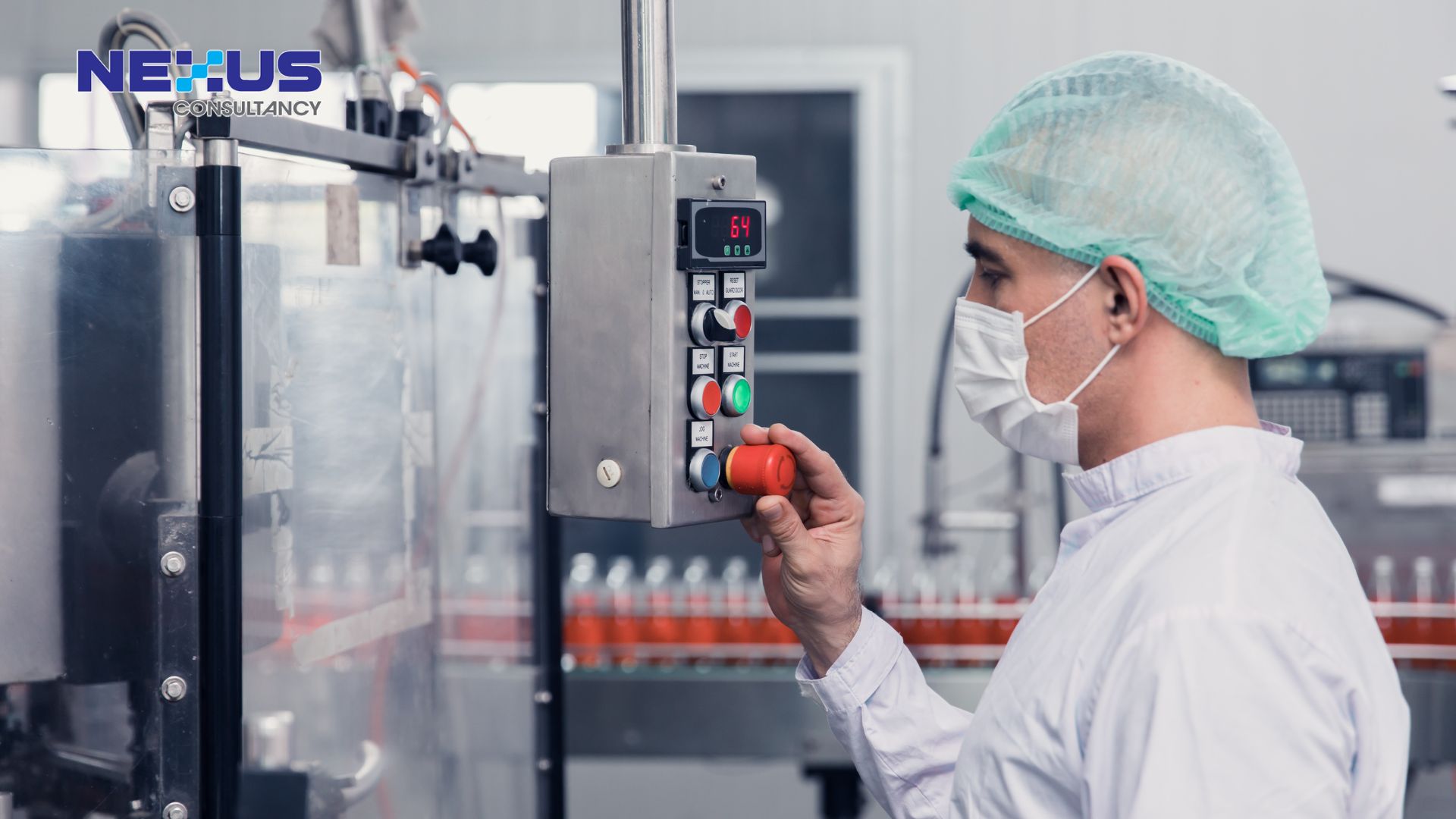
Danielle Tan
Managing Consultant
GMP site inspection ensures organizations’ pre-requisite programs are implemented and maintained to produce products of the highest quality and safety for consumers.

FSSC 22000 version 5.1 clause 2.5.12 PRP Verification specifies the following requirements for GMP inspection at food manufacturing site:
“The organization shall establish, implement and maintain routine (e.g. monthly) site inspections/ PRP checks to verify that the site (internal and external) production environment and processing equipment are maintained in a suitable condition to ensure food safety. The frequency and content of the site inspections/ PRP checks shall be based on risk with defined sampling criteria and linked to the relevant technical specification.”
On top of an annual system internal audit, GMP inspections are required for any facility that handles food, food packaging, or food storage and distribution. GMP inspection is not the same thing as a systems audit, it’s a more hands-on evaluation or checking. Site visual walkthroughs and checks help you spot non-compliant operations and get to work fixing them.
An inspection checklist format that enables a checkbox to be selected for either conformance or non-conformance can be used to record GMP inspection results. When there is a nonconformance, it is necessary to document both what went wrong and what needs to be done in order to fix the problem.

Frequency
The frequency with which GMP inspections shall be carried out is required to be based on risk, however this does not imply that a comprehensive risk assessment is required. Imagine it as a level of risk, from high-risk areas being the riskiest, to external areas being the least risky. As a result, high-risk areas need to be done regularly (e.g. monthly), whereas external areas need to be done infrequently (e.g. quarterly), with other areas fitting in between according to the order of risk.
What to Cover in GMP Site Inspection?
The minimum requirements for GMP inspections are that they focus on personal hygiene, clean as you go procedures, equipment, and fabrication. An overview of the different elements of good manufacturing practices and practical controls that need to be checked during GMP site inspections is provided in the following paragraphs.

#1. People
All employees, visitors, and contractors must adhere to the standards or policies on personal hygiene and protective attire. For example:
- Proper handwashing practices.
- Workers access to processing areas following defined traffic requirements.

#2. Building Fabrication, Equipment and Tools
It is imperative that the fabrication in the area, including the equipment and tools, be clean, in good working condition and free of any potential food safety hazards. For example:
- Processing machines and equipment are maintained in good working condition (e.g. not rusted or loosen parts).
- Temporary repairs do not cause risks of contamination.
- In open product areas, there are not allowed to be any wooden pallets present.
- When not in use, engineering or maintenance equipment needs to be put away in the appropriate manner.
- The equipment dedicated for handling of allergen materials or products needs to be used properly and stored in the appropriate manner.
- Knives are required to have labels and be in good shape at all times. There must not be any snap-off blades present.

#3. Cleaning and Housekeeping
Cleanliness and housekeeping of both internal and external areas shall be checked, which may include the following:
- The cleanup of spills must begin as soon as possible after they occur.
- It is necessary to remove any standing water on a regular basis.
- Storage for hosepipes must be done off of the ground. The drains must be clean and odorless at all times.
- When they are not being used, the tools and chemicals for cleaning need to be put away in the appropriate manner.
- It is necessary to sort the trash and empty the containers on a regular basis.

#4. Pest Control
The monitors for pests (e.g. bait stations) shall be in good working order, they shall be secure, and have legible labels. Locations of the bait stations shall be verified against the pest control layout to ensure the station numbers are accurate.
Observe for any signs of pest infestation (e.g. rat feces, pest body parts, rodent bite evidences) at both internal and external areas.

#5. Food Defense
Check site access is controlled and secured. Wherever they are needed, access restrictions should be set up (e.g. warehouse, production areas, bulk material storage tank). Observe for any signs of security threat or breaches).

#6. Control of Nonconforming Material and Product
Nonconforming materials and products must be clearly labelled and segregated to prevent accidental use.

#7. Warehouse
Materials and products shall be stored in clean, dry, well-ventilated spaces protected from dust, condensation, fumes, odors or other sources of contamination. Specified stock rotation systems (FIFO/ FEFO) shall be observed.
Who Should Conduct the GMP Site Inspection?
The organization’s management or Food Safety Team may appoint any suitable personnel as GMP inspector. The GMP inspector needs to be trained on how to conduct the GMP site inspection in accordance with the internal audit method and how to fill out the necessary GMP inspection documents.
In addition, it is recommended that GMP inspectors be taught to:
- Set up the inspection with the person that’s responsible for the area (e.g. production manager or supervisor, warehouse supervisor etc.).
- What to look out for, with examples of good manufacturing practices and other controls that are easy to implement (CCPs, process controls and records etc.)
- Understanding how to spot deviations from GMP requirements and document them.
- Share the inspection findings.
- The steps to take after an inspection to officially close out any nonconformities that were fixed.
- Instructions for submitting the inspection report.
Conclusion
We’ve all heard the saying, “What gets measured gets done.” It means regular measurement and reporting keeps you focused. GMP site inspection ensures organizations’ pre-requisite programs are implemented and maintained to produce products of the highest quality and safety for consumers.
Reference/Source:
- FSSC 22000 Scheme Version 5.1.
- https://techni-k.co.uk/continuous-improvement/completing-a-gmp-inspection/






